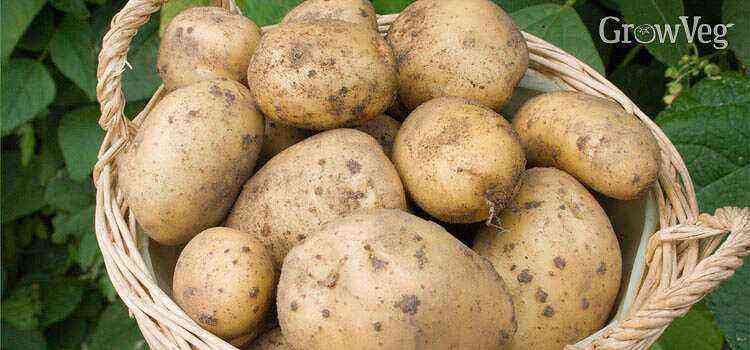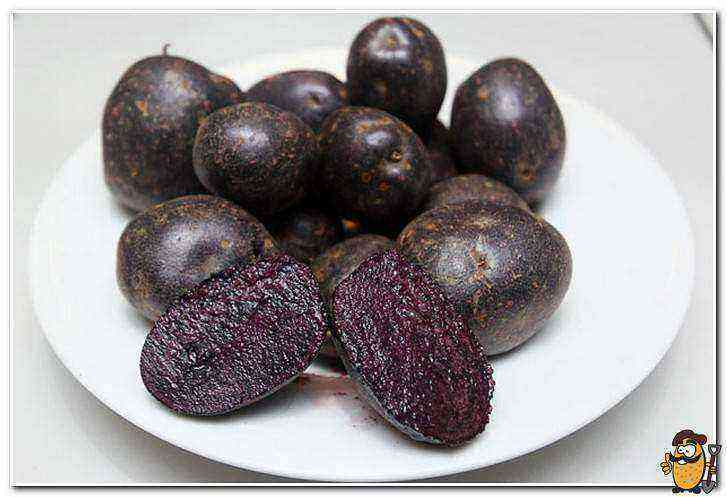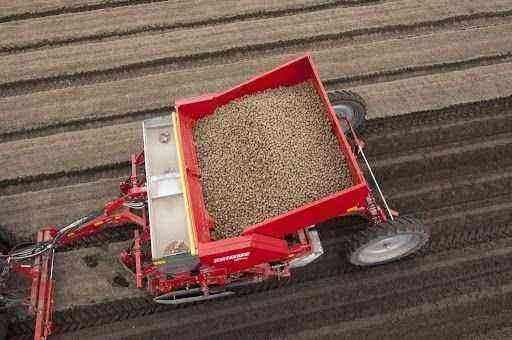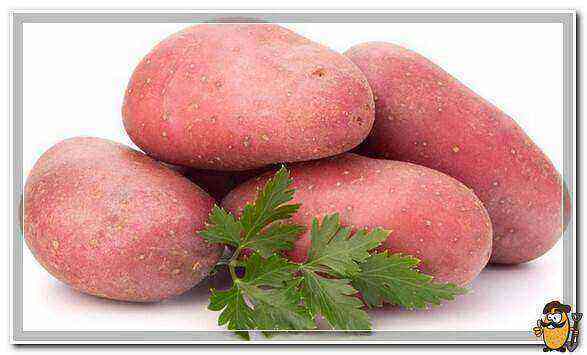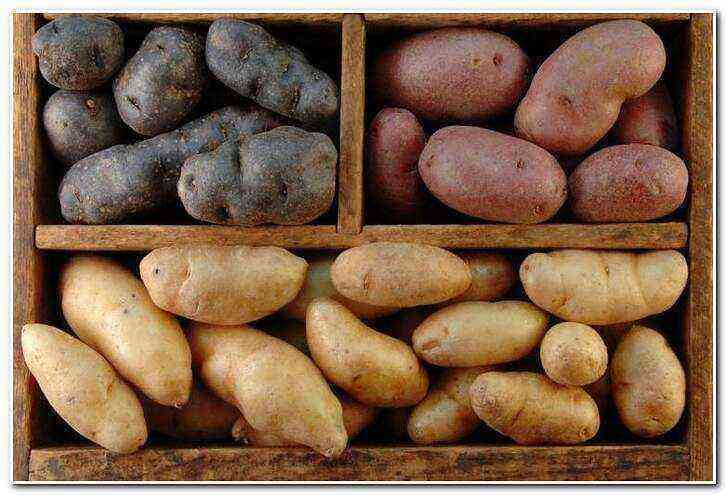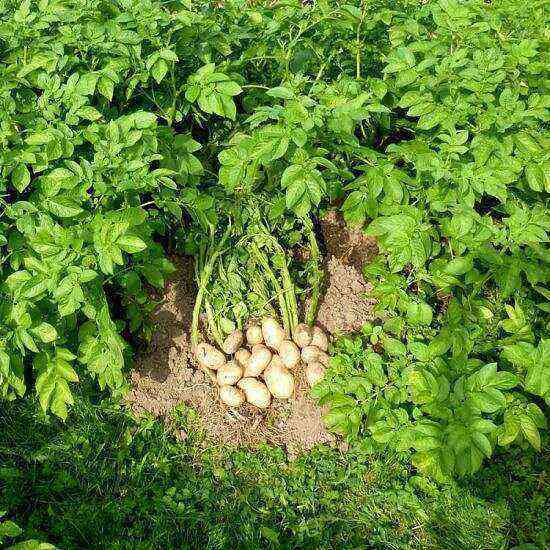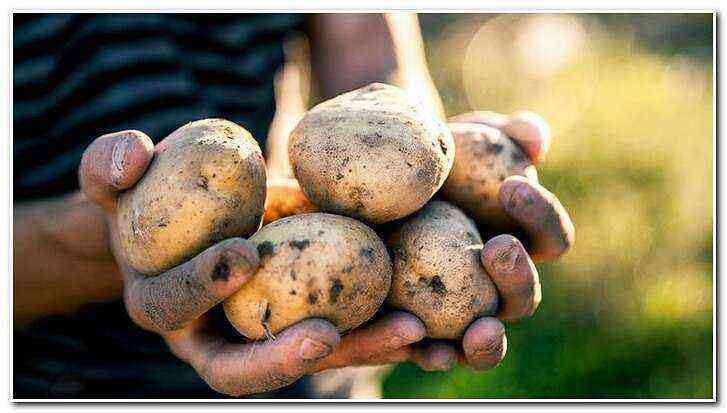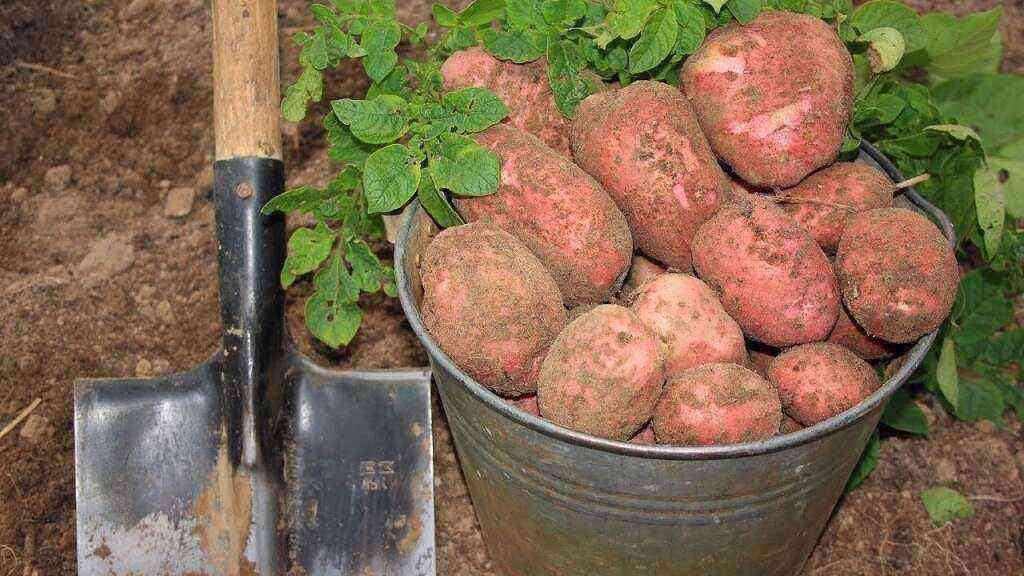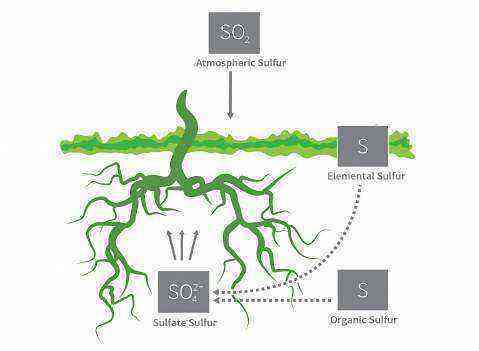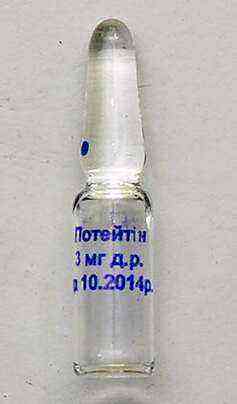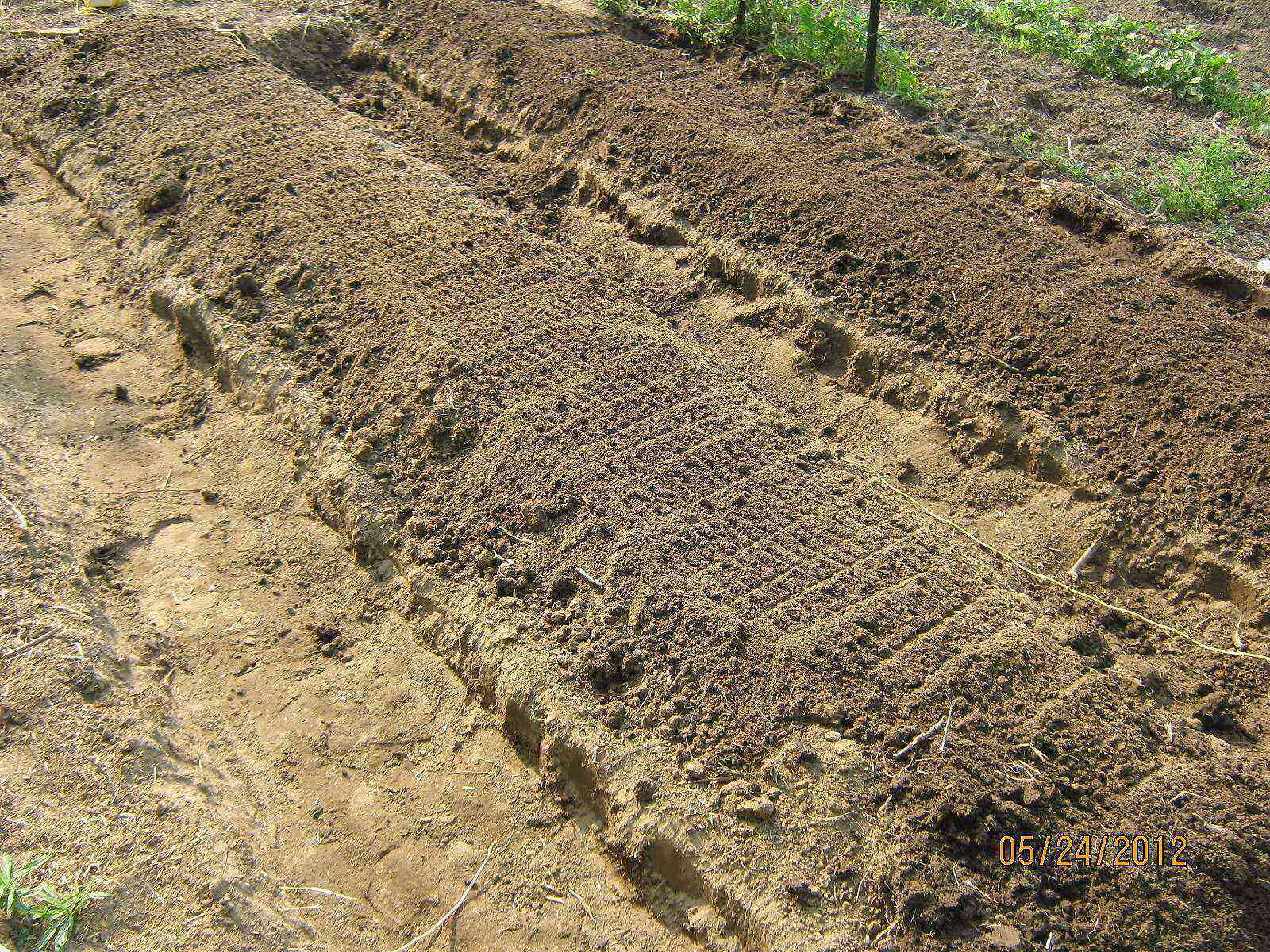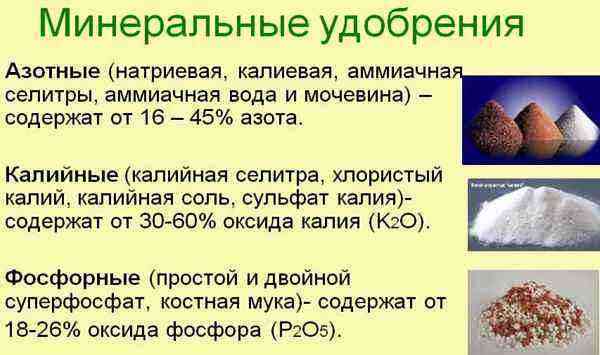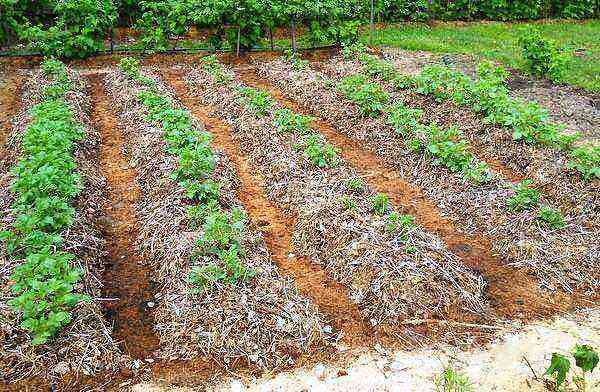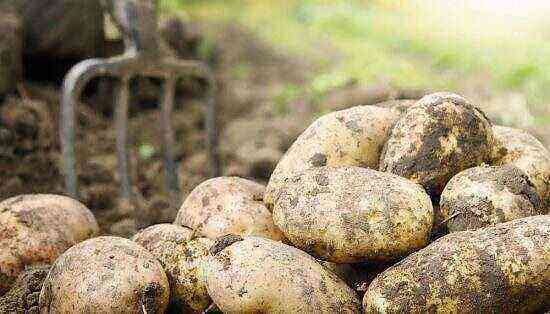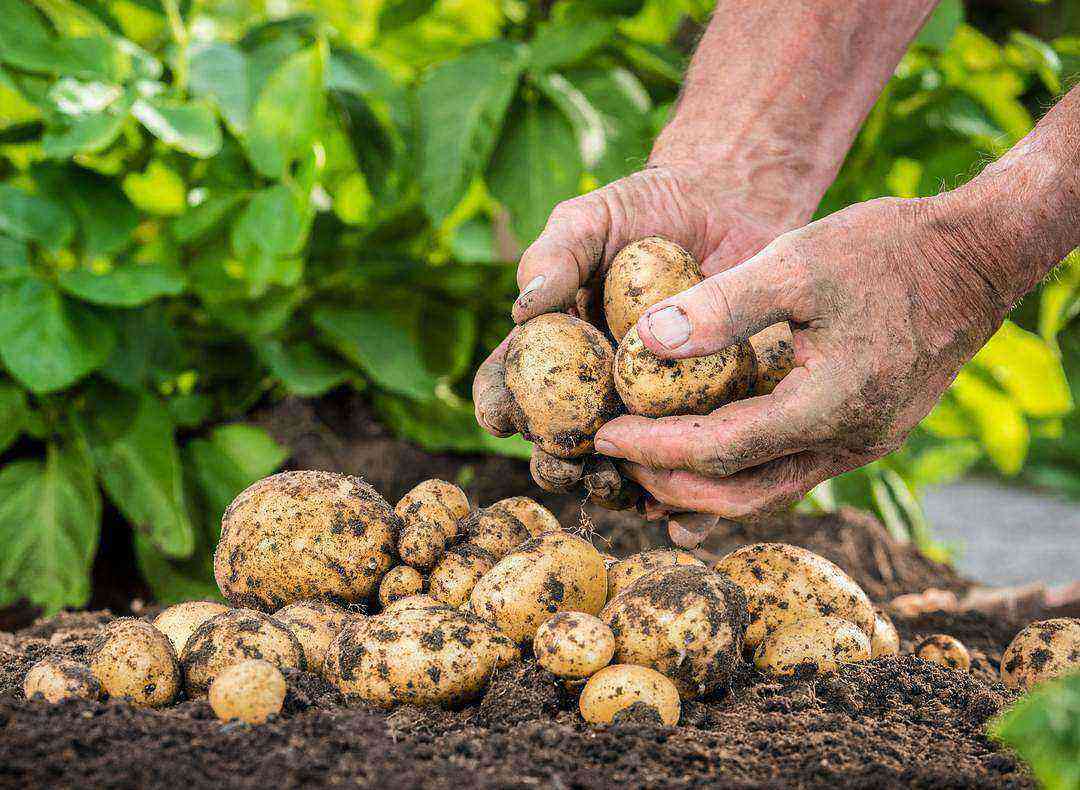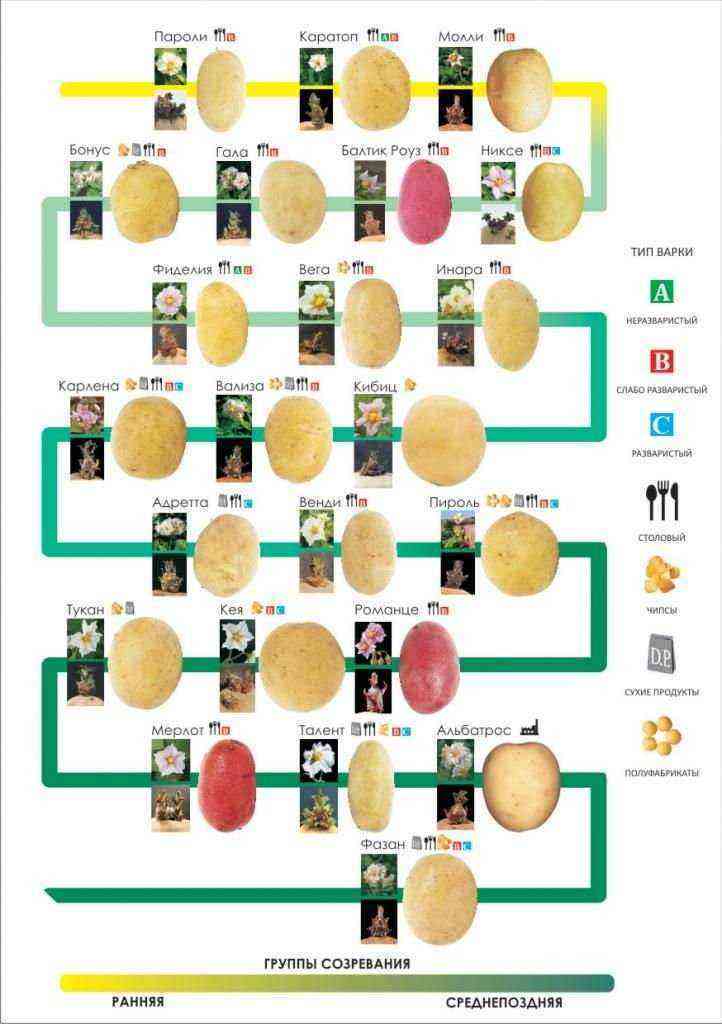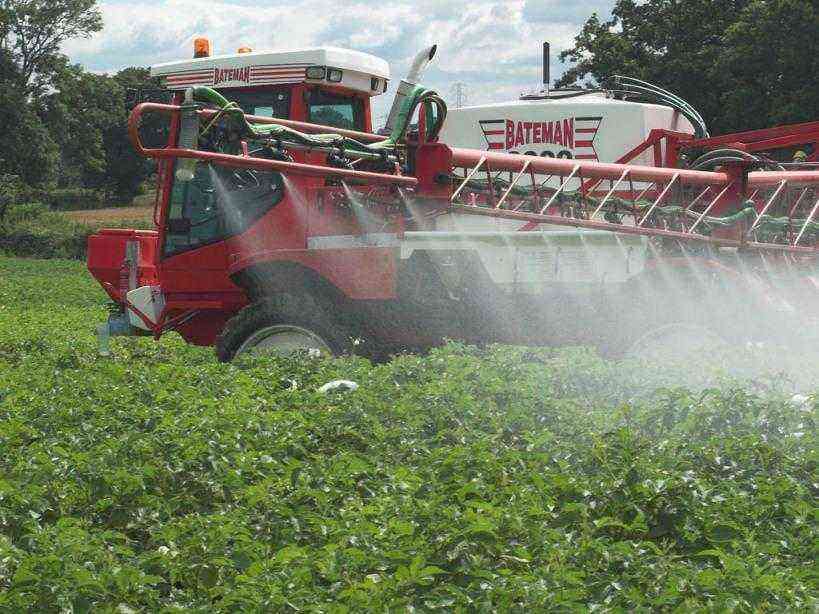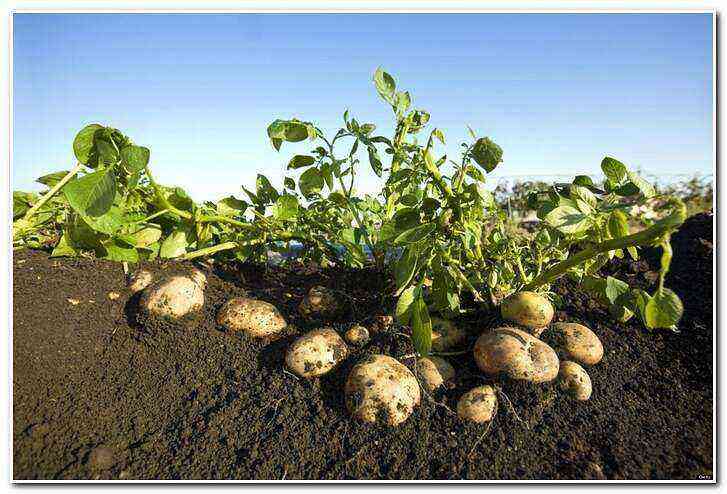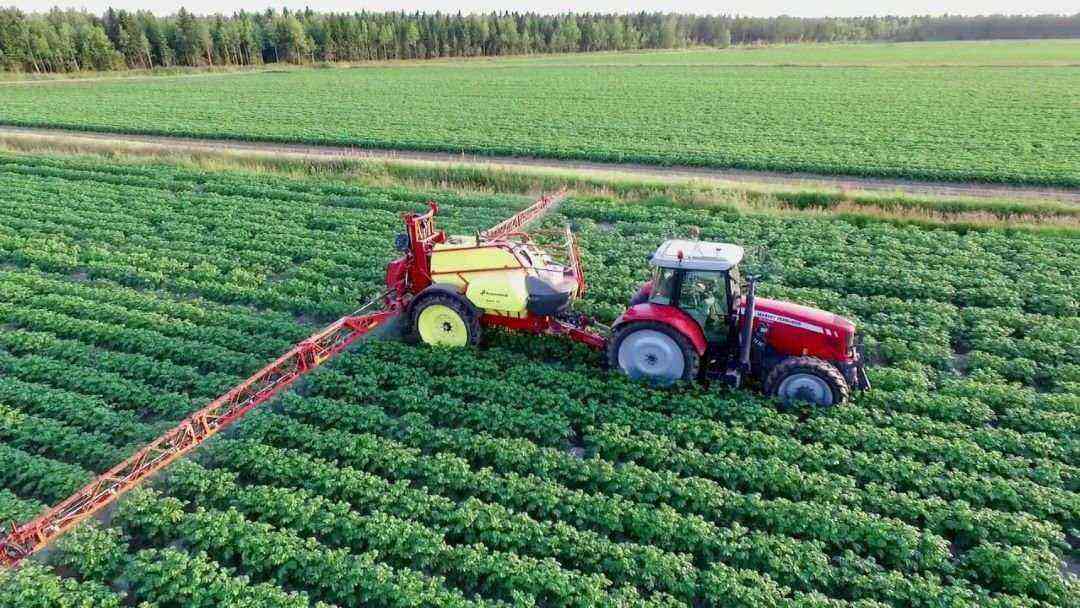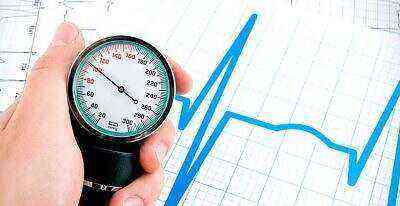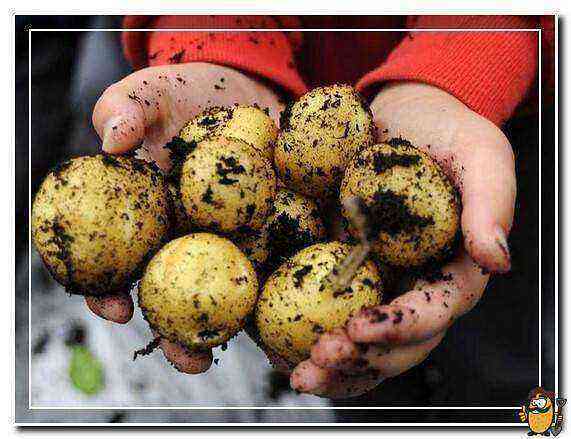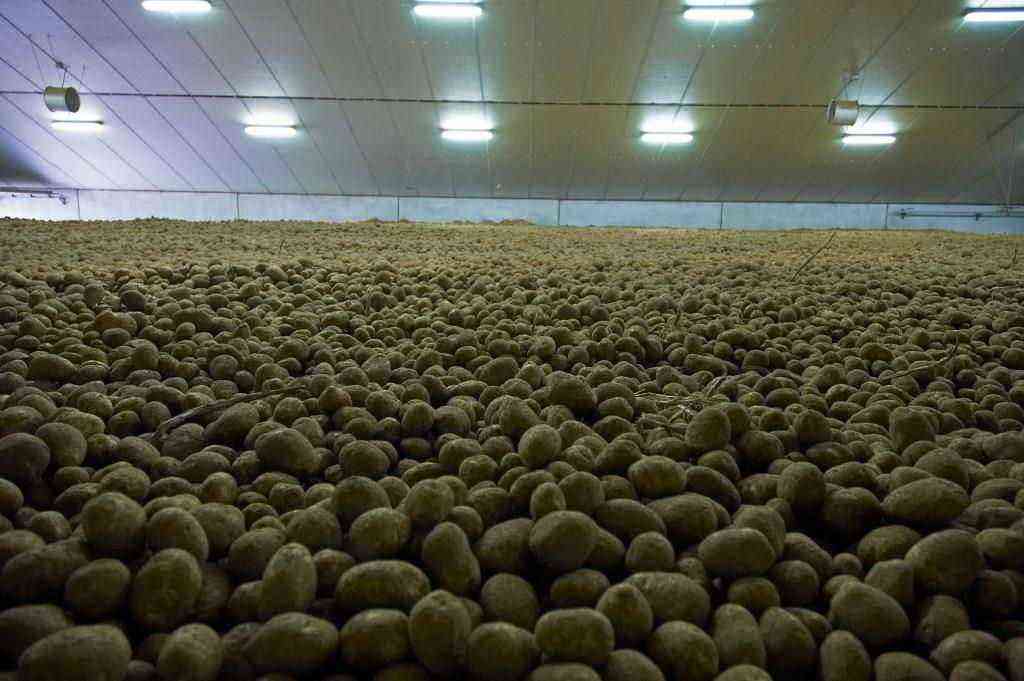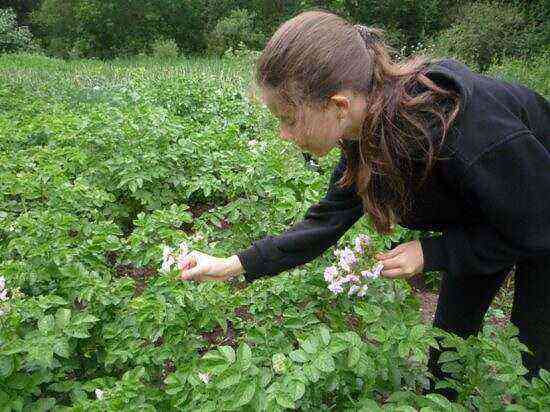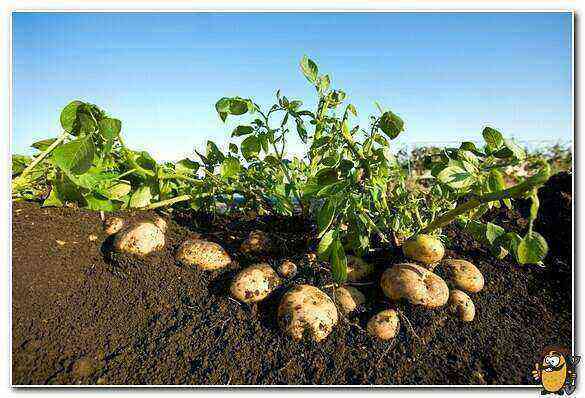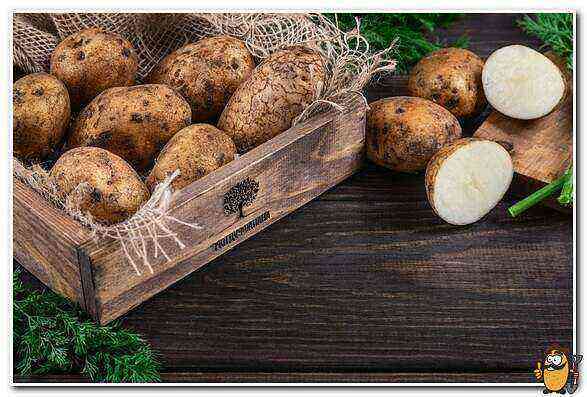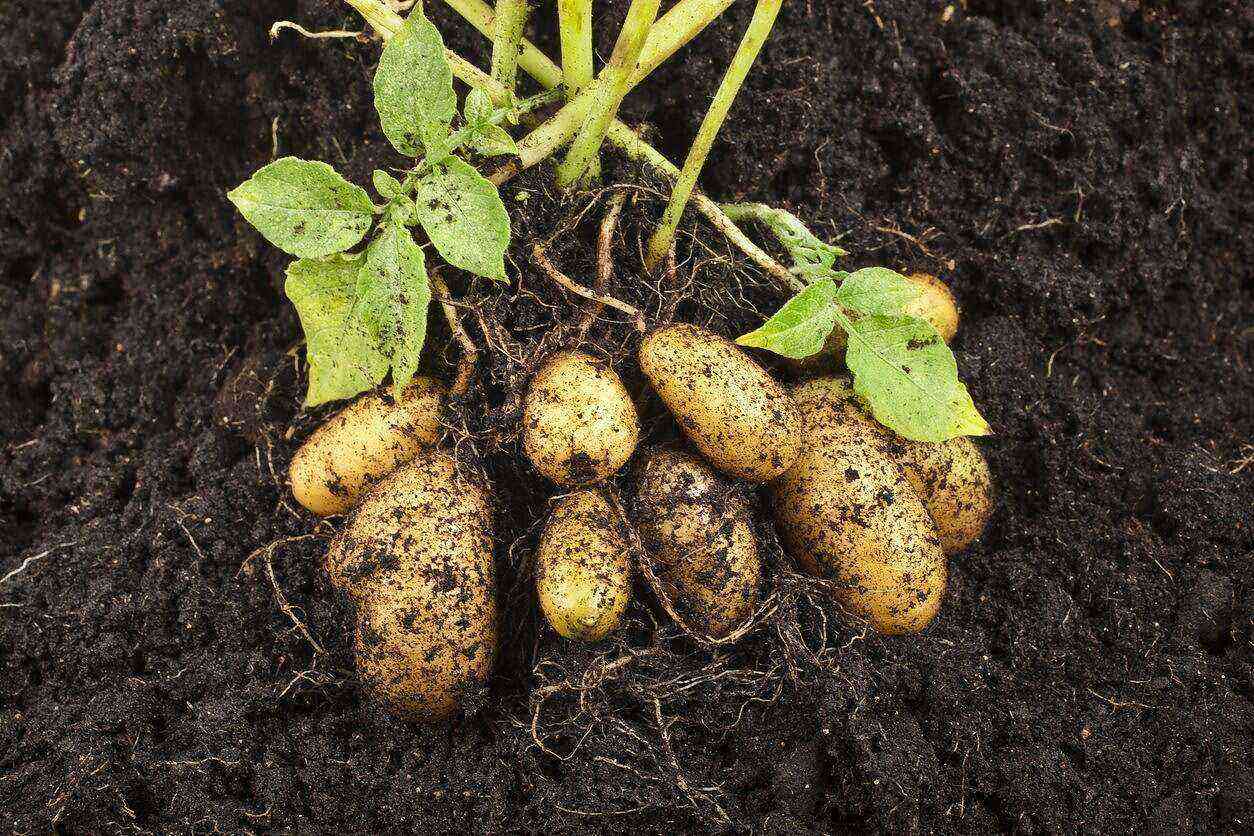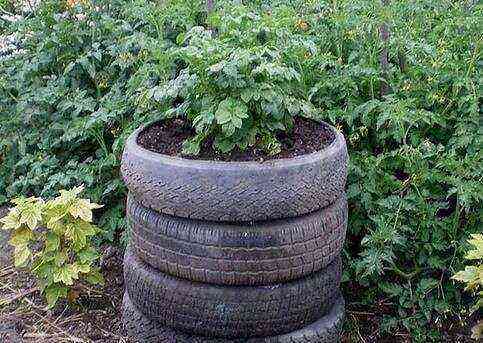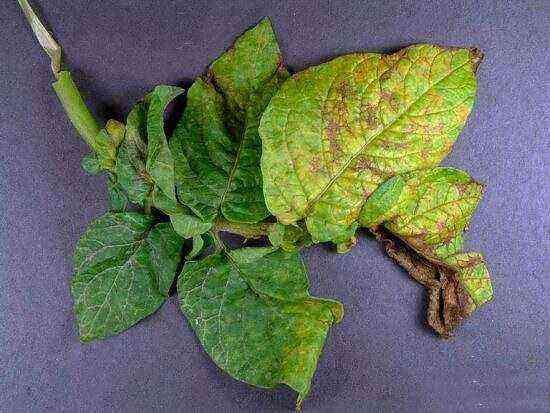Gardeners all over the world argue with enthusiasm about the methods of growing potatoes. How many times, when and with what tools do you need to weed bushes? And is weeding necessary at all? To answer these questions and choose the best way, you first need to understand the characteristics of this plant.
What is potato weeding for? The root system of potato bushes is much weaker than that of many weeds. For normal development, tubers need three things:
- air access (aeration);
- moderate humidity;
- soft, well loosened soil.
Weeds do not care where to grow, but they feel especially good on a field specially fertilized for potatoes. At the same time, weeds intensively suck out useful substances from the soil, intended for cultivated plants. Wheatgrass is especially tenacious: its roots simply pierce young tubers, which is why they begin to rot even in the ground.
Weeding allows you to:
- remove plants that interfere with the growth of potatoes;
- fluff the soil, creating favorable conditions for growth for the tubers;
- provide the tubers with access to air and moisture.
Potatoes are not necessarily planted directly into the ground: there is a fairly effective “no-till” growing technology in hay or straw. But in the case of a serious infection of the site with rhizoctorosis and other potato diseases, this method will not work, since many pathogens can live and multiply in organic mulch.
When to weed potatoes
Usually potatoes are weeded twice a season:
- the first – about three to four weeks after planting, when the sprouted shoots reach a height of 2-4 cm;
- the second – when the potato bushes reach a height of 20-30 cm (depending on the variety).
Weeding, as a rule, is combined with hilling. However, if the tubers were not properly germinated before planting, weeds in the garden may appear much earlier than germination. In this case, you will have to carefully (preferably with a flat cutter) weed the beds without waiting for the sprouts to appear.
The second weeding is carried out before the potato blooms. During and after the flowering of the bushes, the beds practically do not need care.
Potato weeding tools
The choice of tools for weeding potato beds depends on the size of the site, the physical capabilities and individual preferences of the gardener.
All weapons can be divided into groups:
- the simplest hand tools (hoes, hoes, flat cutters);
- cultivators;
- walk-behind tractors.
1. The simplest hand tools. A variety of glanders and hoes are the most common tools for small areas. If potato planting takes only one or two hundred square meters, it makes no sense to purchase more expensive equipment. But even such simple tools are distinguished by a variety of forms.
A regular glanders are a rectangular or trapezoidal piece of metal, sharpened on one side and attached to a long handle. However, this tool is more suitable for row spacing than for beds: with this glanders you can chop up fragile potato stalks, or even hook a root. Therefore, for weeding the beds, two-horned hoes are often used.
Simple quality
It is convenient to work hard clay soil with a sickle glanders: its cutting surface has the shape of a crescent. This tool looks like a hoe, in which not only the ends of the “horns” are sharpened, but also the arc connecting them.
Many gardeners love flat cutters: working with them requires much less physical effort. Fokin’s plane cutter is especially often used: it is good because the gardener himself can change the angle of inclination of the knife as it is convenient for him.
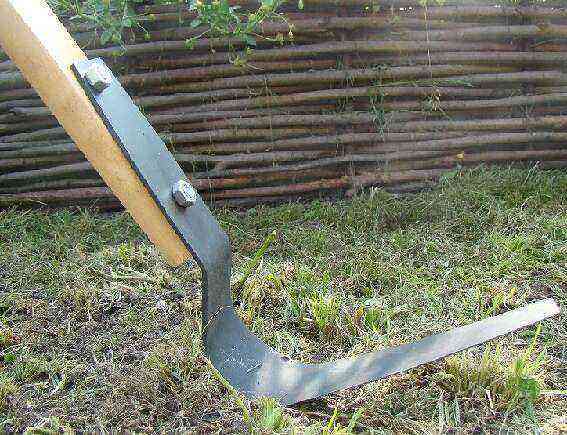 Fokin’s flat cutter
Fokin’s flat cutter
Especially for weeding potatoes, a flat cutter was created, similar to a poker, the “horns” of which are connected with a sharp knife. Such a tool perfectly cuts weeds, and it is absolutely safe for the stems and root system.

The only drawback of all of these tools is the need to apply significant physical effort for weeding.
2. Cultivators. There are: manual, electric, with a gasoline engine.
Even a hand cultivator is just a godsend for the elderly or those who suffer from arthrosis and other diseases of the musculoskeletal system. For example, the Tornado cultivator resembles a pitchfork, the teeth of which are twisted in the form of a corkscrew. This tool is sold at hardware stores, but you can make it yourself. The cultivator is “screwed” into the ground for the entire length of the tines, easily pulling out the entire root of the weed. This tool is best used for row spacing.
 Tornado construction cultivator
Tornado construction cultivator
For beds, cultivators equipped with two knives located at an angle of 45 ° to each other are often used. The cultivators, which have miniature forks with three teeth instead of knives, are even more thoroughly pulling out the weeds. For greater convenience, such tools are put on wheels: the gardener rolls the tool, pressing it to the surface of the garden, as a result of which labor productivity is significantly increased.
 Hand wheel cultivator
Hand wheel cultivator
Using a cultivator with a “hedgehog” type attachment, you can simultaneously weed and huddle the garden bed. “Hedgehog” is a construction of two cones, fastened together by bases. Each cone consists of three metal wheels of different diameters. Sharp spikes are welded onto the wheels. Two “hedgehogs” are put on the cultivator frame. Rotating, the wheels simultaneously catch the weeds with thorns and rake the earth from the row spacing into the beds.
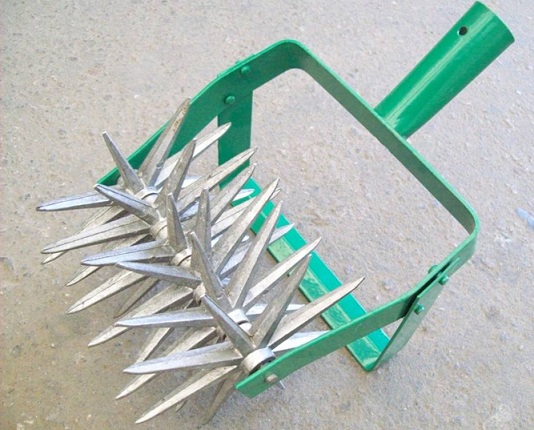 Potato hedgehogs
Potato hedgehogs
Electric cultivators work even faster. They are maneuverable, suitable for small areas. The only drawback of such equipment is the need to pull the cord from the power source, which is not always convenient in the country.
On medium to large plots, it is advisable to use cultivators with a gasoline engine. They are less maneuverable than manual ones, but they are distinguished by high productivity. Hedgehog-type nozzles are used for all types of cultivators.
The power of the cultivator’s engine is selected depending on the type of soil: the heavier the soil, the more powerful the equipment should be.
3. Motoblocks. Equipment characterized by high performance and functionality. They are commonly used on farms.
The most popular attachments for walk-behind tractors are “hedgehog” and “cutter” (several sharpened metal knives fastened together. Working with a walk-behind tractor requires skill and attention: an inexperienced worker can destroy a garden bed. This technique is ideal for flat areas.

By choosing the right weeding tool, you can significantly reduce labor costs, and the cost of equipment will pay off with a rich harvest.
